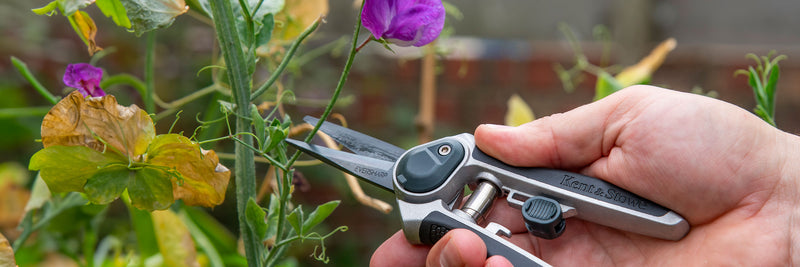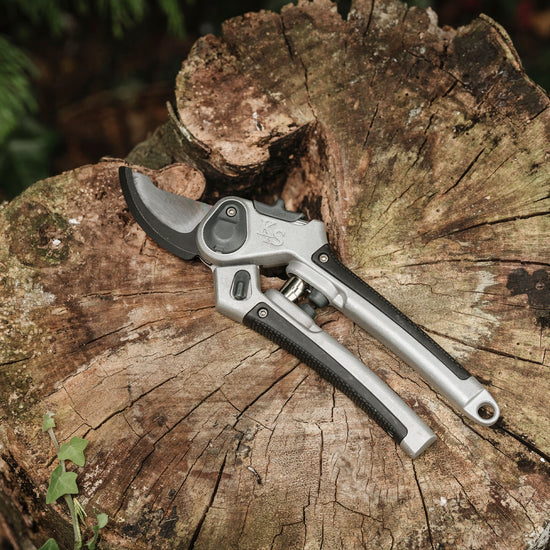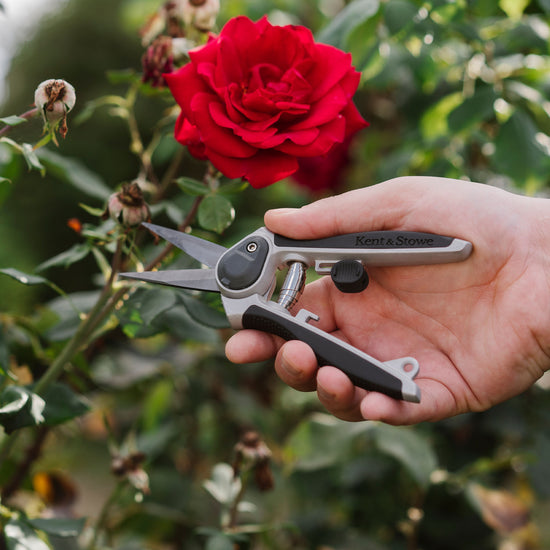Get the most out of your flowers year on year, and enjoy a longer season of blooms by keeping on top of deadheading. It is a little and often job that makes a big difference.
Why deadhead flowers?
Snipping or pinching out faded flowers encourages plants to divert energy into producing fresh flushes of blooms, keeping flowers coming thick and fast over a longer season, instead of running to seed. Deadheading flowers also gives your garden a tidier appearance; if fading flowers are snipped from plants, decaying petals won't end up strewn over the ground.

When to deadhead flowers
- Frequency: Check weekly during peak season (spring to early autumn)
- Best timing: Snip off flowers just after petals fade but before seedpods develop
- Stop deadheading in late autumn - let some plants set seeds for wildlife and winter structure
How to deadhead
-
Identify spent flowers - look for drooping, discoloured blooms losing their vibrancy
-
Cut above a strong bud or leaf junction, about 6 mm (¼″) up - the ideal spot for new growth to emerge
- Use the right tool:
For thin stems and annuals, use fingers to pinch or small snips
For thicker stems (roses, perennials): use sharp secateurs or snips for clean cuts
-
Dispose of spent blooms by composting them or placing them in a bucket to prevent the spread of disease.
The best tools for deadheading
With a sharp pair of secateurs, deadheading flowers is a breeze. Kent & Stowe's Eversharp range ensures cuts are clean, precise, and healthy. A quality pair of secateurs offers comfort and ease of use, ideal for long sessions of deadheading.
With a lightweight aluminium body and tough carbon steel blades, Eversharp Garden Snips make deadheading a joy and also work a treat for cutting flowers, herbs, string, and wire.
If you prefer a lighter tool, our Garden Life cutting range is the perfect choice. They are designed to be compact and incredibly lightweight.

It is also worth wearing a pair of gloves, particularly for thorny plants like roses, to keep your hands and arms protected. Our Sure & Grip gloves are great as they offer the most versatile, guaranteed protection* whilst gardening. They are lightweight and flexible yet also abrasion, tear, and cut resistant - perfect for deadheading roses.
*Gloves to protect against intermediate mechanical risk according to EN388:2016

Plant Specific Tips
- Annuals (marigolds, zinnias, petunias) - Pinch or snip spent blooms at the stem base
- Perennials (salvia, geraniums, coneflowers) - Cut stems ¼″ above a new side shoot as blooms fade
- Roses - Angle-cut 6 mm above a 5-leaflet node (bud eye) - promotes side shoots and fuller bloom. Read our article to find out more about deadheading roses.
- Shrubs (azaleas, camellias) - Deadhead just after flowering, cutting stems cleanly to shape and encourage next season’s blooms.

What not to deadhead
-
Self-cleaning plants like impatiens, lobelia, and begonias shed spent flowers naturally - no need to deadhead
-
Plants valued for seedheads or hips (e.g., sunflower, echinacea, roses with hips) - leave for wildlife or visual interest.
Feeding after deadheading
While deadheading encourages plants to produce further flushes of flowers, liquid fertilisers will boost these flowers even further. We recommend Boost All Purpose Liquid Plant Food, which features an optimised ratio of nutrients that come with the promise of four times more blooms!

Quick deadheading checklist
- Use clean, sharp tools (snips or secateurs)
- Cut above the first healthy bud or leaf
- Clean up spent blooms - avoid leaving debris
- Deadhead weekly throughout the growing season
- Let go by autumn to allow seed production for wildlife








